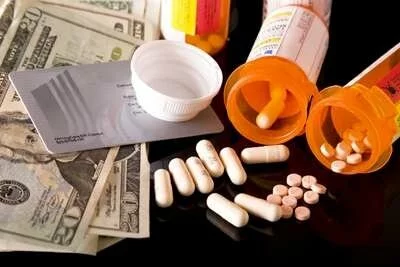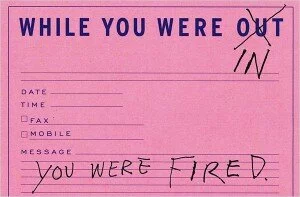
Above is a photograph by Eric Seals of the Detroit Free Press. It depicts James and Geraldine Keon, who for the past three years have regularly purchased their prescription drugs from Canada.
The Free Press profiles the Keons and other Americans who use Canadian pharmacies as part of a story on drug reimportation published over the weekend.
The piece is a bit too heavily influenced by Big Pharma lobbyists and their government cronies, who raise the usual bogeyman arguments about Canadian drugs. But a few important points shine through –
- One congressional estimate says Americans could save $50 billion over 10 years if the nation permitted U.S.-manufactured drugs to be reimported from Canada and other nations where price controls on pharmaceuticals hold down costs.
- Even PhRMA and the FDA acknowledge there haven’t been widespread incidences of people falling ill or dying from adulterated, counterfeit or mislabeled drugs purchased via Internet pharmacies.
- “Some industry groups out there have clearly been active in a public relations campaign to make it seem like buying drugs from Canada is not safe,” said Gabriel Levitt, PharmacyChecker’s vice president. “To scare Americans who are getting their prescriptions safely is borderline unethical.”
The article also offers these four tips for buying from Canadian pharmacies:
- Have the name of the pharmacy and its address, phone, license number and province. The information should be clearly identified on the company’s Web page.
- Buy drugs only through pharmacies affiliated with the Canadian International Pharmacy Association, a trade group.
- Buy only from pharmacies that require a prescription from the patient’s U.S. physician.
- The pharmacy must have a Canadian physician who reviews the prescription, as well as pharmacists available for consultation.
All Canadian pharmacies in the eDrugSearch.com network meet these criteria.

Can I make a suggestion to you? When some political blowhard on TV or the radio tells you something, don’t automatically believe it. Do your research to learn the facts for yourself, OK?
You see, pundits and politicians lie. And they hope you’ll be so accepting of their carefully crafted talking points that you won’t bother to investigate an issue for yourself.
A great example is high drug prices. America has — by far — the highest prescription drug prices in the world. But the pharmaceutical industry, aided by various demagogic pundits and alleged “think tanks,” has done a masterful job of convincing a sizable minority of Americans that these high prices are not the pharmaceutical industry’s fault, or our government’s fault — but instead, the fault of other countries.
Specifically, they argue that drug prices in Canada and Europe are too low, because those countries are “socialist” and put price controls on medications. That leaves the poor pharmaceutical industry to recoup all its enormous R&D costs by charging your grandma $100 for a bottle of pills that everyone else on the planet pays $40 or less for.
You see, America believes in the “free market.” America believes in “competition.” And that’s why America’s drug prices are correct — because they’re set by the “free market,” not by “socialist” price controls.
What a load of rubbish.
When it comes to prescription drugs, America is anything but a “free market.” In a free market, if a company developed a new drug, its competitors could develop competing drugs, and prices would quickly come down to a price set by the market.
That doesn’t happen in America. In America, we do have a form of socialism; it’s called “corporate welfare.”
When a new drug is developed, our government gives the drug company so-called “patent protections.” This means other companies are not allowed to compete with the drug developer for a period of several years.
Then, we allow these same drug companies to game the system, enabling them to extend their patents indefinitely by creating “new and improved” versions of the same drugs ad nauseum.
Finally — and this might be the most “ad nauseating” thing of all — once a drug company’s patent expires, our government allows drug companies to pay off generic suppliers to NOT make low-cost competing drugs.
Does ANY of this sound like a “free market” to you?
You can thank our lawmakers in Washington — and their friends, the pharmaceutical lobbyists with briefcases full of campaign contributions — for creating this system. It’s not a “free market” because Big Pharma has bought and paid for it.
All of this is to preface telling you that your outrage as consumers — despite the best efforts of Big Pharma and its water carriers to tamp it down — is finally having an impact.
President Obama is working with Congress to make it illegal for drug companies to pay off generic drugmakers. As U.S. News & World Report explains:
The administration wants to ban makers of brand-name drugs from shelling out “pay-for-delay” settlements to generic drugmakers, a practice that creates a financial incentive for generic drug companies to keep their much cheaper drugs off the market.
“If it’s legal for a brand to pay a generic to sit out, why wouldn’t it?” Federal Trade Commission Chairman Jon Leibowitz explained today at a Center for American Progress event. “And if a generic drug company is allowed to make more money by not competing than by going to market, isn’t that a good business deal for the company and its shareholders? The answer is, of course it is.”
Brand-name drugmakers have exclusive rights to their drugs only for a limited time. Generic drug companies can enter the market once the original patent is expired, “invented around,” or invalidated. This is when the elbows come out, as brand-name drug companies in recent years have spent millions paying their generic rivals to drop patent challenges. It’s often better business for the generic drug company to take the money than to continue the challenge and then put the drug out there. “Clearly these are win-win deals for the companies, but they leave consumers footing the bill,” says Leibowitz.
The administration is solidly behind stopping this, and there are bills making their way through the House and Senate that would do just that. If the practice ends, American consumers could save $35 billion over a 10-year period, according to Leibowitz. The government’s savings could be $12 billion over 10 years since it pays such a hefty chunk of the nation’s prescription drug bill. “And these assumptions are quite conservative,” adds Leibowitz.
Someone once told me during an argument that I was entitled to my own opinions — but not to my own facts.
You can say “yes” to high drug prices if you want to. But don’t ever say that high drug prices are set by the “free market.” That’s a load of hooey.
Image source
The eDrugSearch.com e-book “99 Ways to Save Money on Your Prescription Drugs, 2012 Edition” is now available on Scribd, where you can see a preview of the book’s first 4 pages before purchasing.
Check it out and start saving on your prescription drugs now!
eDrugSearch.com’s 99 Ways to Save Money on Your Prescription Drugs 2012 Edition
 You probably didn’t see it in the news — since it got about 1/1000th of the coverage received by Sarah Palin spatting with David Letterman and Spencer and Heidi quitting “I’m a Celebrity … Get Me Out of Here” — but a noteworthy legal settlement occurred last week.
You probably didn’t see it in the news — since it got about 1/1000th of the coverage received by Sarah Palin spatting with David Letterman and Spencer and Heidi quitting “I’m a Celebrity … Get Me Out of Here” — but a noteworthy legal settlement occurred last week.
A major drug wholesaler, McKesson Corp., and two drug-price publishers have settled a class-action lawsuit accusing them of inflating drug prices. Here’s an explanation of what they did, according to the suit:
“Prescription drugs often are priced using certain benchmarks. The most common pricing benchmark is called the Average Wholesale Price (“AWP”). AWP is often used in determining how much insurance companies and other Third-Party Payors will reimburse for these prescription drugs and the co-payment price that some consumers pay for them. The lawsuit claims that two Defendants, McKesson Corporation (“McKesson”), a large drug wholesaler, and First DataBank (“FDB”), a publisher of drug data, wrongfully inflated the mark-up factor used by FDB to determine the AWP for certain prescription drugs (“Subject Drugs”). The lawsuit claims that, as a result, many drug purchasers overpaid for these drugs.”
The defendants have agreed to pay out $350 million to reimburse patients, insurers and employers. And — here’s the really interesting part — the court has ordered the prices of hundreds of brand-name drugs to be cut by about 4 percent, which, theoretically, could result in $1 billion in drug savings the first year alone.
But don’t count on dollars dropping from the sky in your direction. Analysts told the Wall Street Journal that drug pricing is so “opaque and complex, patients won’t likely get meaningful and long-lasting relief.”
I’m afraid I have to agree that most Americans will never see a dime of savings from this settlement. But let me break down this “opaque and complex” thing, because it’s really neither.
Many of these brand-name drugs have patents that give them pricing monopolies. They can throw a dart at the board and make the price whatever they want.
So, the court orders a 4 percent price cut? Whoa!
It’s not uncommon for drug makers to raise their prices by five times that in a year. What’s another 4 percent thrown in? Who would know? And who are we kidding?
Opaque, huh?
To find out if you are eligible to collect from the $350 million settlement fund, go here.
And for a complete list of the overpriced drugs, which include Lipitor, Lamisil, Monistat, Cipro, Ultracet, Zofran and many, many more, go here.
 You are probably aware by now of Medicare Part D, which provides a prescription drug benefit to seniors. But did you know that you also may be able to qualify for extra help from Social Security?
You are probably aware by now of Medicare Part D, which provides a prescription drug benefit to seniors. But did you know that you also may be able to qualify for extra help from Social Security?
If you are covered by Medicare but have limited income and resources, Social Security may step up to pay part of your monthly premiums, annual deductibles and prescription co-payments. The extra help is worth an average of $3,900 per year.
You can qualify for extra help if you have income limited to $16,245 for an individual or $21, 855 for a married couple living together.
Even if your annual income is higher, however, you still may be able to get some help depending on your specific circumstances. These include:
- Supporting other family members who live with you;
- Having earnings from work;
- Living in Alaska or Hawaii; and/or
- Having resources limited to $12,510 for an individual or $25,010 for a married couple living together. Resources include such things as bank accounts, stocks and bonds.
Social Security has an online application for those interested. You can also call Social Security at 1-800-772-1213 and ask for the Application for Help with Medicare Prescription Drug Plan Costs, or go to the nearest Social Security office.
To learn more about the Medicare prescription drug plans and special enrollment periods, visit www.medicare.gov or call 1-800-MEDICARE.

Copays used to be a reminder of how nice it was to have health insurance. Now, too often they are a reminder of how little insurance we really have.
Not long ago, copays for prescription drugs were almost universally small, flat fees — as little as $5, no matter how expensive the medication you required.
The original rationale for the copay was to prevent people from seeking unnecessary care, such as visiting the doctor whenever they had the sniffles. The underlying assumption was that without a small copay, consumers would view medical care as “free” and overuse it.
That may have been the original reason for copays. But it’s not the reason anymore.
Today, those “small” flat fees have grown to as much as $50 or more per 30 day prescription — and that’s not the half of it.
Now, many insurers are demanding that patients pay co-pays based on a percentage of the retail price of expensive medications — as much as 33 percent or more of the total cost.
As NaturalNews.com has reported:
Hundreds of drugs are now being priced this new way. These drugs are used to treat diseases that are fairly common, including multiple sclerosis, rheumatoid arthritis, hemophilia, hepatitis C and some kinds of cancer. Unfortunately, there are no generic equivalents for these drugs, so patients are being forced to pay these prices or go without.
People are “going without” because the new copay system means that some patients are required to pay thousands of dollars out of pocket for their prescriptions — even though they have insurance.
It makes you question the very definition of insurance, doesn’t it?
Fortunately, for those who are struggling with co-pay expenses, there is a non-profit organization called the Patient Advocate Foundation (PAF) that can help.
The PAF Co-Pay Relief Program provides direct financial assistance to insured patients, including Medicare Part D beneficiaries, who qualify based on medical and financial criteria. The program offers personal service through phone counselors, who guide patients through the enrollment process.
The program assists insured patients who are being treated for the following conditions: breast, lung, lymphoma, prostate, kidney, colon, pancreatic, and head/neck cancers; malignant brain tumor; sarcoma; diabetes; multiple myeloma; myelodysplastic syndrome (and other pre-leukemia diseases); osteoporosis; pain; hepatitis C; rheumatoid arthritis; selected autoimmune disorders; and CIA/CIN.
If you are struggling to afford your drug copayments, call the PAF Co-Pay Relief Program at 1-866-512-3861 or apply for help online.

I recently came across a remarkable blog rant by a man named Jim Thornton, a competitive swimmer at age 56. Under a list of his latest swimming times, he shared the story of some of the struggles he’d recently been having with healthcare and prescription drug costs.
An excerpt:
Our health insurance went up to $1711.50 a month for a plan that requires each member of the family to spend $1400 a year before complete coverage kicks in. For a variety of complicated reasons, we cannot alter any of the terms of the policy. It is a take it or leave it situation. If we leave it, my wife and I have been taking statin drugs and antidepressants and will not be able to obtain individual policies that are not even more exorbitant than the extortionary policy we already have.
As close to unaffordable as it is this year, it seems certain that even modest increases in the years to come … ensure we will not be able to pay, most likely within two or three years.
We got audited by the IRS three weeks ago, and a large part of this was because our accountant set up a plan by which I could pay my wife a salary and give her and her family health insurance as a benefit. By doing this, I could deduct as a business expense not just the premiums but the out of pocket expenses, too. The IRS is challenging this…
So, let me get this straight:
US Big Pharma is granted the legal right to join New Zealand as the only two countries in the industrialized world to shamelessly tout ads on TV direct to consumers for drugs, creating demand for antidepressants, cholesterol lowering drugs, penis inflaters, hay fever and allergy meds, and so forth, all for chronic conditions that often require life time treatment, trumping up demand.
US Big Health Insurance is granted the legal right to cherry pick through “medical underwriting” any individual who has ever taken any of the above drugs and deny him or her coverage or charge exorbitant rights.
Big Pharma, furthermore, lobbies to block the reimportation of their drugs from Canada and pretty much any other country in the world, where the exact same thing costs anywhere from 50 percent to 8 times less. The rational: the FDA cannot assure the safety of reimported drugs, even ones in factory sealed bottles…
If you work for a big company, you can qualify for cheap health insurance, but this for all too many people just becomes yet another way to keep you as a virtual indentured servant, putting up with abusive managers demanding you do unethical things to up the profit margins, work nonstop, ignore your family, etc.–all because they know a lot of people have become so stressed out and fat and unhealthy because of their jobs they CAN’T quit because they won’t be insurable.
What, I ask you, is not a PONZI scheme in our modern land of liberty?
Can you relate?
 The AARP’s annual report on prescription drug prices, released last week, reveals that pharmaceutical manufacturers raised prices on the most popular brand-name drugs by 8.7 percent in 2008 — well over twice the rate of inflation.
The AARP’s annual report on prescription drug prices, released last week, reveals that pharmaceutical manufacturers raised prices on the most popular brand-name drugs by 8.7 percent in 2008 — well over twice the rate of inflation.
According to the AP:
AARP’s report highlighted growing costs of what it said were the 219 most widely used brand-name drugs.
Among the drugs that saw the biggest price increases in 2008, according to AARP: Prevacid, for acid reflux; Wellbutrin, for depression; and Lunesta, for sleeping.
Prevacid went up by 30 percent, Wellbutrin by 21 percent and Lunesta by 20 percent.Financial analysts have attributed some of the increases to drug makers attempting to boost profits amid an economic downturn as they confront the prospect of congressional action on health care that could change the marketplace.
One of the interesting notes in the story is the presumed rationale for the huge price increase for Prevacid:
Some brand-name drug prices are increased shortly before their patents expire and they become available as generics. Prevacid, for example, is going off-patent in November.
Let us put that another way for you. Prevacid’s manufacturer was given a monopoly that allowed it to charge whatever it wanted for the drug. With that monopoly finally close to expiration, despite all efforts to extend it, the manufacturer decided to hike prices another 30 percent just to milk the drug for all the profits it can — because it can.
The AARP’s public policy director, John Rother, advocates that Americans purchase their medications from safe and licensed Canadian pharmacies, among other remedies, to help counter rising U.S. drug costs.

With pink slips being handed out left and right these days, it’s time to get practical and think about how to manage your insurance and other medical costs in the event you are laid off. Here are six tips:
1. See if you can get on your spouse’s plan. If your spouse has health insurance through their employer, check to see if you can be added to their plan. Generally, you can join your spouse’s plan within 30 days of losing eligibility for your current coverage. It’s a special event for which you don’t have to wait for open enrollment.
2. If that isn’t an option, consider COBRA. By law, employers must provide laid-off workers information about COBRA, a government mandate that gives workers the right to choose to continue coverage under the employer’s group plan for a limited period. The average monthly premium for COBRA is $300 for an individual and $1,000 for a family. However, thanks to the recently passed federal stimulus legislation, many workers who have been laid off can receive a 65 percent subsidy for up to nine months of COBRA, meaning that you only have to pay 35 percent of the total cost. For a family, that can reduce the average burden from $1,000 per month to $350 per month — saving the family about $6,000 over a nine-month period.
3. If COBRA’s too expensive, investigate SCHIP. If you can’t afford COBRA premiums for the entire family, you can consider moving the children to the State Children’s Health Insurance Program (SCHIP), which provides coverage for children in low- to moderate-income families. You can learn more about SCHIP here.
4. Work with your doctor to reduce your medical and drug costs. Have a heart-to-heart with your family physician and tell him or her how much you can really afford to pay for prescription medications. When your doctor is unaware of your financial situation, he or she usually doesn’t think twice about a drug’s price — and may prescribe an expensive drug that’s no more effective than a cheaper alternative. There may also be drugs you can eliminate from your regimen altogether.
5. If your job was shipped overseas, check out the Health Coverage Tax Credit. Thanks to the federal stimulus package, the government will now pay as much as 80 percent of your health insurance premiums if you are eligible to receive benefits under the Trade Adjustment Assistance program. Learn more about this program here.
6. Look into prescription drug assistance programs. Together Rx Access, a discount card offered by drug companies, has raised the income eligibility threshhold for the program, which offers significant discounts of a wide range of medications. The annual income requirement now ranges from $45,000 or less a year for a single person (up from $30,000) to $105,000 or less for a family of five (up from $70,000).

In researching Wal-Mart’s impending battle with PBMs like Express Scripts and Medco, which are aggressively pushing consumers to order drugs by mail rather than at retailers like Wal-Mart, I came across some interesting data on pharmacy costs at the blog of Dr. Adam J. Fein, an economist who studies the pharmacy supply chain.
Dr. Fein referenced a study on the cost of dispensing drugs at pharmacies nationwide. Among the factoids in the study:
- The national average cost of dispensing is $10.50 per prescription.
- Costs vary widely from state to state, ranging from an average of $8.50 per prescription in Rhode Island to $13.08 in California.
- Costs vary widely based on the size of the pharmacy, ranging from $9 for the busiest pharmacies to $25 for the lowest-volume pharmacies.
If you ever wondered why that small, independent pharmacy on the corner charges so much more than the big chains do, the answer is that it really has no choice. As Dr. Fein explains:
This variation is not surprising (at least to an economist). Put aside the cost of the drug (ingredient cost) for a minute and just think about the operating costs.
Pharmacies have high fixed costs relative to the incremental (marginal) costs of dispensing because certain factors are required regardless of volume — a pharmacy license, pharmacists, insurance, rent, etc. In other words, filling the first prescription is very expensive, while filling the second prescription is not.
A pharmacy that fills more prescriptions will see average cost per prescription go down, even if marginal cost remains constant. Basically, both the marginal cost of dispensing and the ingredient costs were relatively low.
In other words, it’s an issue of scale. And so small, independent retailers like Pennsylvania’s RXD Pharmacy (pictured above) will continue to close for good. Soon, they will no longer exist.
An RXD pharmacist bemoaned his business’s fate:
Our fixed costs continue to go up, such as (business and health) insurance and salaries. General overhead has continued to rise, but the reimbursement, unfortunately, continued to decline. Don’t forget, we offer free delivery. We don’t get reimbursed for that. I don’t get reimbursed for the label that goes on the bottle, or the vial itself. We absorb the cost.
The demise of small independent pharmacies is only the first shoe to drop, however.
Next, large but inefficient drug specialty chains like Rite Aid, as well as perhaps others, will bite the dust. They can’t match Wal-Mart’s scale (or business savvy) any more than the small independents can.
And so we will be left, in the end, with Wal-Mart vs. mail order. And that will truly be a death match.
At eDrugSearch.com, we’re content to watch from the sidelines — because we know you’ll always find a better price from us on brand-name drugs than you will at Wal-Mart, Express Scripts or Medco.
Try us and see for yourself.
-
-

-
How to Safely Buy Prescription Drugs Online from Cary Byrd on Vimeo.
-
Search Blog Posts
-
Trending Content
-
Blogroll
- Bullet Wisdom
- Christian Social Network
- DrugWonks.com
- Eye on FDA
- GoozNews
- Health 2.0
- In the Pipeline
- Jesus Christ Our King
- Kevin, M.D.
- Pharm Aid
- Pharma Marketing
- PharmaGossip
- Pharmalot
- San Antonio Asphalt
- San Antonio Life Insurance
- San Antonio Pressure Washing
- The Angry Pharmacist
- The Health Care Blog
- The Peter Rost Blog
- World Vision
-
Tags
big pharma Canadian drugs canadian pharmacies canadian pharmacy consumer reports craig newmark divine healing Drug costs drug prices Drug reimportation eDrugSearch.com FDA Fosamax Generic drugs healing scriptures Health 2.0 healthcare reform Hypertension Jehova Rophe Jesus Christ Lipitor Metformin miracles nabp online pharmacy dictionary online prescriptions osteoporosis peter rost Pharmacies pharmacists pharmacychecker pharmacy spam phrma Prescription drug coupons Prescription drugs prescription medication Proverbs 3:5-8 reimportation relenza Roche saving money swine flu Tamiflu The Great Physician The Lord our Healer -
Archives
- July 2013 (11)
- June 2013 (8)
- May 2013 (8)
- April 2013 (8)
- March 2013 (10)
- February 2013 (14)
- January 2013 (6)
- August 2012 (2)
- July 2012 (1)
- June 2012 (1)
- April 2012 (6)
- March 2012 (3)
- February 2012 (1)
- January 2012 (2)
- November 2011 (2)
- June 2011 (2)
- August 2010 (1)
- July 2010 (2)
- June 2010 (2)
- May 2010 (3)
- April 2010 (4)
- March 2010 (5)
- February 2010 (4)
- January 2010 (1)
- November 2009 (2)
- October 2009 (6)
- September 2009 (7)
- August 2009 (11)
- July 2009 (12)
- June 2009 (18)
- May 2009 (14)
- April 2009 (10)
- March 2009 (13)
- February 2009 (10)
- January 2009 (10)
- December 2008 (24)
- November 2008 (22)
- October 2008 (27)
- September 2008 (28)
- August 2008 (23)
- July 2008 (30)
- June 2008 (32)
- May 2008 (29)
- April 2008 (27)
- March 2008 (19)
- February 2008 (26)
- January 2008 (35)
- December 2007 (23)
- November 2007 (26)
- October 2007 (36)
- September 2007 (25)
- August 2007 (33)
- July 2007 (36)
- June 2007 (31)
- May 2007 (32)
- April 2007 (22)
- March 2007 (22)
- February 2007 (29)
- January 2007 (18)
- December 2006 (56)
- November 2006 (16)
-
Recent Comments
- Sophie on Reclast’s “jaw problems” caused by too many warnings, spoken too quickly?
- Marcy on How to Get Coupons on Prescription Drugs
- Cary Byrd on Maine Becomes First State to Allow Prescription Drug Importation from Licensed Mail-Order Pharmacies
- brenda eppinette on Maine Becomes First State to Allow Prescription Drug Importation from Licensed Mail-Order Pharmacies
- Ranee on What is the Difference Between Effexor and Cymbalta?
